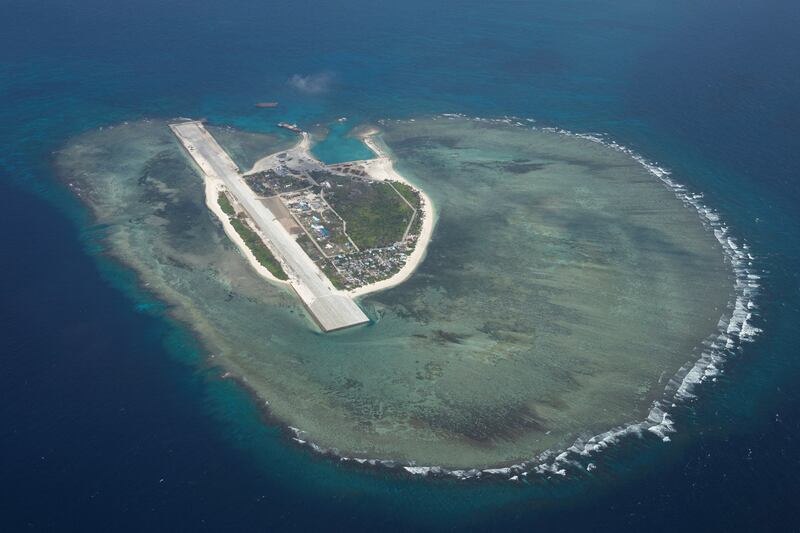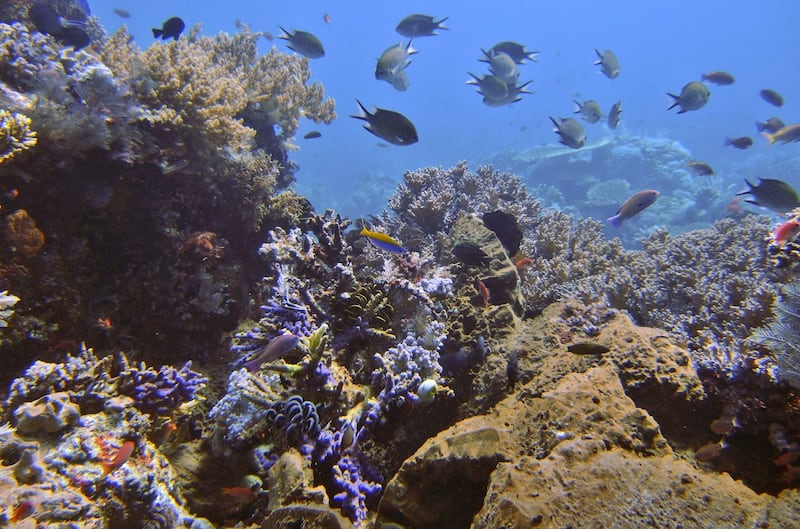Activities by countries claiming territory in the South China Sea have made a devastating impact on coral reefs, with vast areas being destroyed or badly damaged, a new report said.
"In recent decades, increased fishing, dredging, and landfill, along with giant clam harvesting, have taken a devastating toll on thousands of species found nowhere else on earth," said the Asia Maritime Transparency Initiative (AMTI) at the U.S. Center for Strategic and International Studies (CSIS) in a new report released on Dec. 18.
One of the main findings is that more than 6,200 acres (25km2) of coral reef have been destroyed by island building efforts in the South China Sea, with 75% of the damage being done by China, according to the report on the ecological damage caused by human activities in the contested sea.
Another 16,353 acres (66.1km2) of coral reef were damaged due to giant clam harvesting by Chinese fishermen.
Industrial fishing by Vietnam and China, especially the use of bottom-trawling (catching fish by towing a net along the sea floor), has caused serious damage to the marine environment.
Overall fish stocks in the South China Sea are depleted, resulting in fish catch stagnating since the 1990s despite increased fishing efforts, the report said.
Reef destruction
AMTI researchers looked into the alarming destruction of coral reefs caused by island building activities by some of the claimants – China, Vietnam, Malaysia, the Philippines and Taiwan.
Those five countries and Brunei are the parties that claim parts of the South China Sea, with China’s claim being the most expansive.
In order to support their maritime claims, they have been setting up outposts in the sea and developing new islands with the help of invasive methods such as dredging the seabed to gather material for landfill, or land reclamation.

“China has caused the most reef destruction through dredging and landfill, burying roughly 4,648 acres (18.8km2) of reefs,” the report said. Vietnam comes second with 1,402 acres (5.7km2).
The AMTI report sheds light on the dredging method used by China to build artificial islands.
“Its cutter suction dredgers would slice into the reef and pump sediment through floating pipelines to shallow areas to deposit it as landfill,” it described.
“This process disturbed the seafloor, creating clouds of abrasive sediment that killed nearby marine life and overwhelmed the coral reef’s capacity to repair itself.”
Beijing carried out most of its island building activities during 2013-2017 and by 2022 had fully militarized the three largest reefs – Subi, Mischief and Fiery Cross.
Other claimants are known for using less destructive dredging methods.
“Until recently, Vietnam had primarily used clamshell dredgers and construction equipment to scoop up sections of shallow reef and deposit the sediment on the area targeted for landfill,” AMTI said.“This method is slower and causes less collateral damage to surrounding areas.”
“More recently, however, Vietnam has turned to cutter suction dredgers like China’s. This large-scale expansion of Vietnam’s South China Sea outposts remains ongoing and will have major consequences for the surrounding marine environment,” it warned.

Malaysia, the Philippines and Taiwan have also been developing their islands, but to a much lesser extent, and there have been efforts to minimize the environmental impact.
“Dredging will be less harmful with more sedimentation and plume control during the dredging and reclamation works,” said Kamaruzaman Legiman, a Malaysian engineering expert who works as Development Lead at the firm JL Projects Sdn Bhd.
“Additional mitigation can also be implemented via frequent water quality inspection to avoid any unwanted damages,” Kamaruzaman added.
Giant clam harvesting
Besides dredging and landfill, the AMTI report has also discovered another major destructive factor – giant clam harvesting – that is responsible for the damage of vast areas of coral reef.
“The harvesting of giant clams for their remarkable shells has become popular in recent decades because of their resemblance to elephant ivory, which is now extremely difficult or illegal to obtain,” it said.

They are sold as jewelry or statues in China for high prices of up to US$106,000 per carved shell, according to the researchers.
The report said Chinese fishermen have been using an extremely harmful method of “dragging specially made brass propellers” to dig up reef surfaces and “to more easily harvest both live and dead clams attached to the reef.”
As a result, many reefs in the South China Sea now show arc-shaped “scars,” said the report, noting that Chinese fishers are known to use this method.
Edited by Taejun Kang and Mike Firn.
